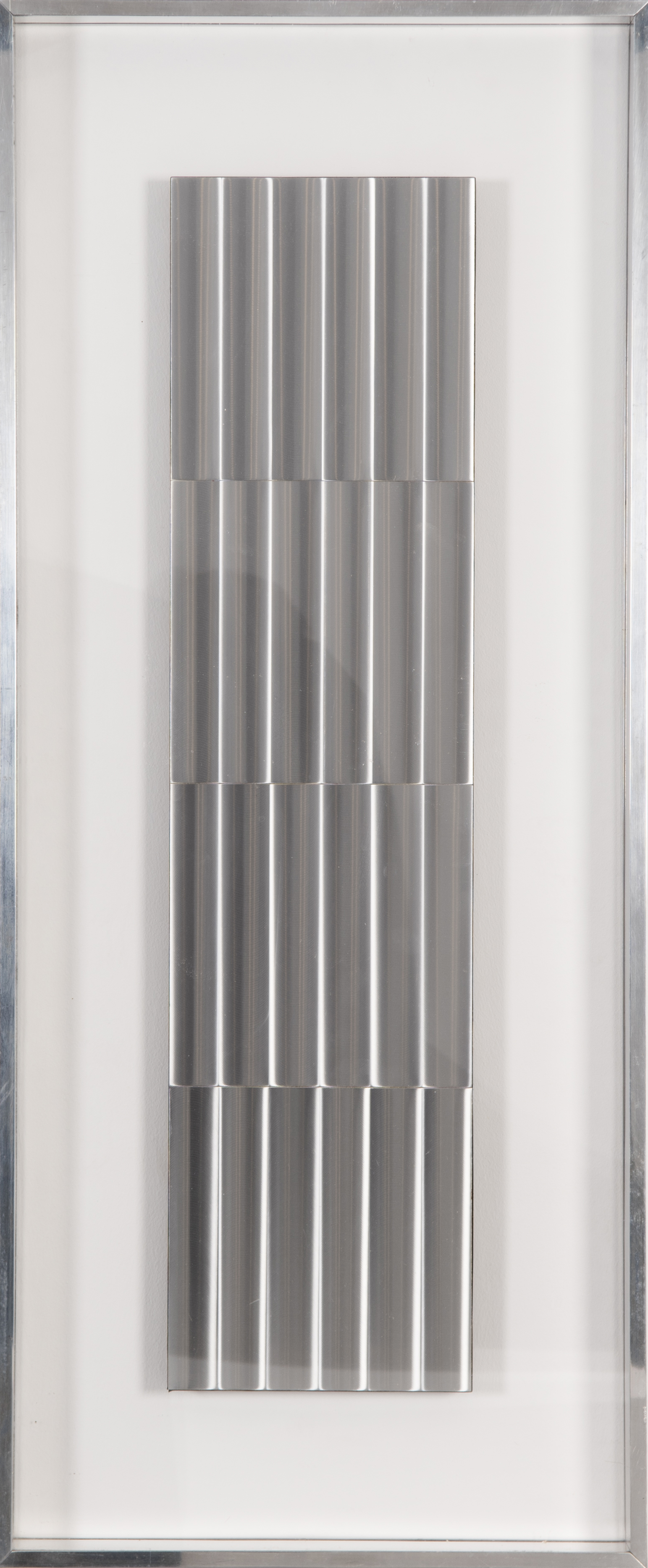Alviani attended the Artistic School in Venice, and worked as a graphic designer and artistic director until 1959. In 1960 he began to work on the sculptural series Superfici a testura vibratile, characterized by highly polished surfaces that reflected and refracted light in diverse and complex ways according to the angle from which they were observed. Initially he built his sculptures with iron in a free-hand style. Subsequently he manufactured them in steel and aluminum following rigorous geometric patterns using high precision tools. He presented these works in solo exhibitions at the Mala Galerija (Ljubljana) and the Mladih Salon (Novi Sad) in 1961. His Rilievi Speculari which he produced shortly after were based on a similar principle. In 1962 he was selected to participate in a number of group exhibitions titled Arte Programmata, organized by the company Olivetti, which included artists who not only practiced kinetic art but also expressed a particular interest in social issues. That same year he moved to Milan where he worked with Josef Albers and Max Bill.
Alviani developed close relationships with the members of GRAV. He also participated in various exhibitions with the group Nouvelle Tendance in Zagreb, Venice, Berlin, and Paris (1963-1969), which featured artists who worked in kinetic and Op Art. Between 1962 and 1963 he produced a series of serigraphs in a kinetic style that inspired the development of textile designs by fashion designer Germana Marucelli. The designs, called Op-Dresses by the press, were shown in New York, Milan, and Rome. During these years he continued to develop his graphic work and participated in the Mednarodna grafiÄna razstava (International Biennial of Graphic Arts) in Ljubljana (1963).
The intense activity carried out by Alviani during the early 60s led to his participation in important avant-garde exhibitions including the XXXII Venice Biennial in 1964 where he showed with the members of the N and T Groups in the large hall of the Italian pavilion. In 1965, his international recognition grew even more after being invited to participate in the group exhibition The Responsive Eye at the Museum of Modern Art in New York, which brought together some of the most active artists working in Op Art and kinetic art at that time. That same year he made his first Environment titled Specular Interrelationship which was included in the collective exhibition Lo spazio dell ‘immagine (Palazzo Trinci, Foligno, 1967).
Another environmental interactive piece was created in 1969 for the Palais de Beaux Arts in Brussels (Belgium) and later moved to Gorinchem (Netherlands). Titled Interrelaziones Cromospeculare, it featured rotating mirrors in which images of the viewers and various colored panels were dynamically reflected and multiplied. In the late sixties he explored diverse and complex possibilities for Op Art and investigated the production of optical phenomena based on physical and chemical reactions including the effect of water and fire. Despite the important works that evolved from these new proposals, his reflective metal sculptures continued to be his most celebrated works which were periodically exhibited.
Between 1975 and 1981 he devoted himself to teaching at the Academy of Fine Arts in Carrara (Italy). In 1981 Jesus Soto and the Venezuelan authorities invited him to be the director of the newly founded Jesus Soto Museum of Modern Art in Ciudad Bolivar, Venezuela, a position he held until 1985. From that time on, his artistic production gradually decreased as he dedicated himself to the development of architectural and curatorial projects, and to the writing of critical and theoretical texts. His work continues to be shown regularly in solo and group exhibitions
Getulio Alviani lives in Milan, Italy.
